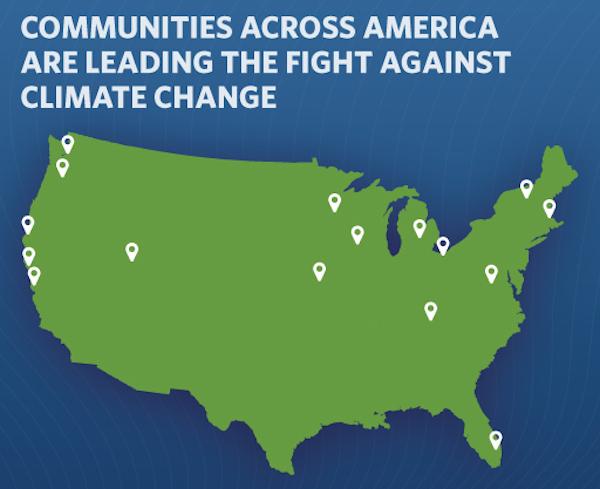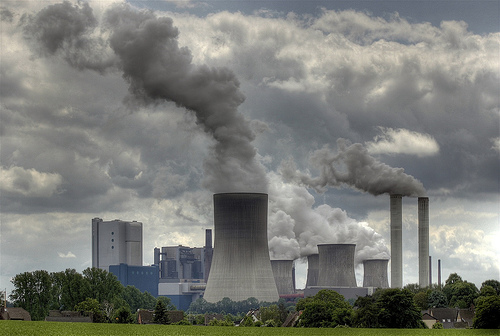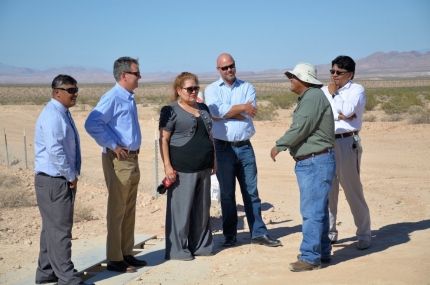Two tribes are among 16 communities across the U.S. designated by President Barack Obama as Climate Action Champions, “a diverse group of communities that are defining the frontier of ambitious climate action, and their approaches can serve as a model for other communities to follow,” the White House said on December 3.
The Blue Lake Rancheria Tribe of California and the Sault Ste. Marie Tribe of Chippewa Indians each won for a diversity of efforts in preventing, preparing for and adapting to climate change.
The designees “have considered their climate vulnerabilities and taken decisive action to cut carbon pollution and build resilience,” the Obama administration said. All were winners in a nationwide competition launched by the Department of Energy during the fall that was designed to identify and recognize climate leaders as well as provide them with federal support in mitigating and adapting to climate change.
The federally recognized Blue Lake Rancheriatribe of California created its climate action plan back in 2008, the White House said, calling it “a regional leader in strategically planning and implementing both climate resiliency and greenhouse gas reduction measures.”
Such measures include reducing energy consumption by 35 percent, committing to reduce greenhouse gas emissions 40 percent by 2018, powering public buses with biodiesel fuel and adopting other energy-efficiency initiatives.
The tribe’s overall environmental programs date back to 1997, according to its website, and are rooted in a deep-seated sense of responsibility not only to its own lands but to those outside the borders.
“The Blue Lake Rancheria’s responsibility to protect the land does not stop at the boundaries of the Rancheria,” the tribe’s environmental pagesays. “The ancestors of Tribal Membership ranged all across the spectacular landscape of Northern California. Further, they had a relationship with the land that was immediate, personal, and binding—and that relationship continues through their descendants. Respect and stewardship of the environment is a powerful tenet of the Tribe’s philosophy and operations today.”
In Michigan, the Sault Ste. Marie Tribe of Chippewa Indians“demonstrates a holistic approach to climate action and preparedness through their energy strategy, emergency operations plan, integrated resource management plan, solid waste management plan, sustainable development code, and land use planning process, with ambitious goals including a net-zero energy goal,” the White House said. “The tribe aims to reduce greenhouse gas emissions by four percent per year.”
Sault Tribe Environmental Program Manager Kathie Brosemer credited the tribe’s diverse efforts in not only climate change but food security, emergency preparedness, waste reduction and other areas, she said in a statement.
“I am so proud of my administration’s Natural Resources, Health, Traditional Medicine, Housing, Law Enforcement, and Planning in pulling together our call to action to protect our Aki (Mother Earth),” said Tribal Chairperson Aaron Payment in the Sault Ste. Marie statement. “I appreciate the President recognizing our excellence.”
Each community will be mentored and coached by other experts from various federal programs, the White House statement said. In addition, each one will be assigned a coordinator to act as a liaison between the federal agencies, national organizations and foundations that are supporting the designees. The coordinator will also scout out and notify the champions of any funding and technical assistance that they are eligible for.
Such support includes tribal-focused technical assistance geared specifically toward the two designated communities. The two tribes will be eligible to participate in the DOE Office of Indian Energy Strategic Technical Assistance Response Team (START) program, which provides in-depth technical know-how. Other customized technical assistance will be offered as well, the administration said, along the lines of support for projects and programs that promote the development of clean, efficient energy.
RELATED: Ten Tribes Receive Department of Energy Clean-Energy Technical Assistance
Read more at http://indiancountrytodaymedianetwork.com/2014/12/05/obama-names-two-tribes-among-16-climate-action-champions-nationwide-158145





